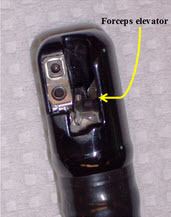Carbapenem-Resistant Enterobacteriaceae (CRE) Resources
Useful Links:
Carbapenum-Resistant Enterobacterales
New Protocol Offers Hospitals Option to Detect Bacterial Contamination of Duodenoscopes
Combating antibiotic-resistant infections and protecting patients are national priorities. Recent outbreaks of CRE ( carbapenem-resistant Enterobacterales) related to a type of endoscope called a duodenoscope have occurred without identified lapses of infection control. 
With input from healthcare facilities, professional partners and stakeholders, CDC has developed an interim protocol for facilities that want to test their duodenoscopes for contamination with bacteria, including CRE, after the cleaning and disinfection process.
These interim protocols provide a step-by-step approach for facilities wanting to check whether scopes could be a source of infection for patients. Included are suggestions for how scopes should be sampled, options for the frequency and types of sampling, how to test those samples in a lab, and how to interpret results. Sampling is not a substitute for correct cleaning and disinfection (“reprocessing”) of these scopes. The interim protocols are intended to supplement and not replace manufacturer- recommended reprocessing procedures.
PDF for Download
Interim Duodenoscope Surveillance Protocol
Interim Duodenoscope Sampling Method
Interim Duodenoscope Culture Method
CDC Infographic

View the CDC’s Carbapenem-resistant Enterobacterales (CRE) webpage to learn more about this condition.
2012 CRE Toolkit - Guidance for Control of Carbapenem-resistant Enterobacterales (CRE) (PDF, 2.98 MB).
